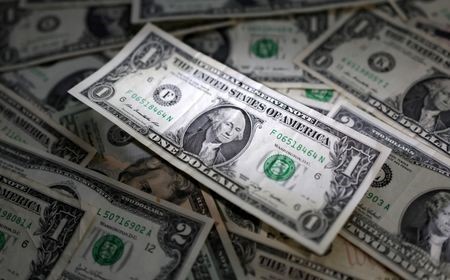




Policy Rate Updates: Double cut finale
 DOWNLOAD
DOWNLOAD

Monthly Economic Update: One for the road
 DOWNLOAD
DOWNLOAD

Inflation Update: Still low, still slow
 DOWNLOAD
DOWNLOAD


Dollar rises from 14-month low, yuan dips

NEW YORK – The dollar bounced off a 14-month low against the euro on Wednesday in choppy trading, but investors held onto bets that the Federal Reserve will make another large interest rate cut at its November meeting on weakening labor optimism.
The yuan also eased on growing doubts about the impact of a new round of Chinese stimulus and after the initial rally on the news was seen as overdone.
The greenback tumbled on Tuesday after data showed that US consumer confidence dropped by the most in three years in September amid mounting fears over the labor market.
“The narrowing in the labor market differential, which is sort of indicative of demand and supply conditions in the employment market, was a very bad omen for the US economy,” said Karl Schamotta, chief market strategist at Corpay in Toronto.
“Markets are interpreting this as a sign that the Federal Reserve is very likely to deliver a second emergency-sized cut at its November meeting,” he added.
Traders are now pricing in 59% odds of a 50-basis point cut at the Fed’s Nov. 7 meeting, up from 37% a week ago, and a 41% chance of a 25 basis point reduction, according to the CME Group’s FedWatch Tool.
The Fed last week kicked off an anticipated series of interest rate cuts with a larger-than-usual half-percentage-point reduction that Fed Chair Jerome Powell said was meant to show policymakers’ commitment to sustaining a low unemployment rate now that inflation has eased.
Data on Wednesday showed that sales of new US single-family homes fell less than expected in August.
This week’s main US economic focus will be the Personal Consumption Expenditures index for August on Friday.
The euro was last down 0.41% at USD 1.1134 after earlier reaching USD 1.1214, the highest since July 2023. The dollar index rose 0.68% to 100.91. It earlier fell to 100.21, matching a low from Sept. 18, which was the weakest since July 2023. The greenback gained 1.03% to 144.68 Japanese yen and reached 144.75, the highest since Sept. 3.
China’s stimulus had earlier contributed to a stronger euro, with its resilience partly driven by a perception that a better outlook for Chinese demand could feed its way back through into Germany and through into Europe, said Jane Foley, senior forex strategist at Rabobank.
Despite weak German economic data and concerns about the French budget, the euro has held up “extremely well” against the dollar this week, she said.
France’s budget deficit risks overshooting 6% of economic output this year, the country’s new budget minister, Laurent Saint-Martin, told lawmakers in the National Assembly on Wednesday.
The Chinese yuan gave back earlier gains a day after China’s central bank unveiled its biggest stimulus since the pandemic to pull the economy out of its deflationary funk and back toward the government’s growth target.
The dollar was last up 0.33% at 7.033 yuan in offshore trading. The Chinese currency earlier reached 6.9952, the strongest since May 2023.
Riskier currencies including some in emerging markets that had rallied on the stimulus also pulled back.
“We are seeing a number of risk-sensitive asset classes essentially retracing from the levels that were reached in the aftermath of that announcement, and that’s really on the basis of a skepticism among investors as to whether the measures that were announced will succeed in boosting growth in the real economy,” said Schamotta.
The Australian dollar, which is viewed as a more liquid proxy for the yuan, also dipped on ebbing inflation in the country. Australian domestic consumer prices slowed to a three-year low in August, while core inflation hit its lowest since early 2022.
The Aussie AUD=D3 was last down 0.99% at USD 0.6823. It earlier hit USD 0.6908, the highest since February 2023.
In cryptocurrencies, bitcoin fell 1.41% to USD 63,324.
(Reporting By Karen Brettell; Additional reporting by Rae Wee and Linda Pasquini; Editing by William Maclean and Jonathan Oatis)
This article originally appeared on reuters.com





 By Reuters
By Reuters